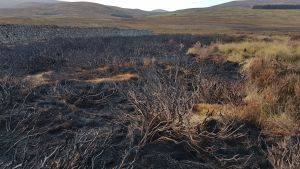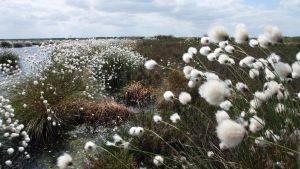The Fleet Catchment in Dumfries and Galloway, a relatively small catchment covering around 144km2, runs from the hills around Cairnsmore of Fleet down to the Solway, with the upper catchment falling within the core area of the UNESCO designated Galloway and Southern Ayrshire Biosphere Reserve.
During the 1970’s there was a dramatic crash in fish populations in the Fleet catchment, thought to be attributable to the scavenging effects of closed canopy conifers, acid rain and potentially the drainage of peatlands. The catchment is particularly sensitive to acidification due to the underlying geology dominated by a granite outcrop, offering little buffering capacity to neutralise acidic inputs. This has resulted in the Fleet headwater streams becoming some of the most acidified in Britain.
With the intention to facilitate a more integrated approach to future management of the catchment the Fleet Catchment Survey Project, funded by Peatland ACTION, is a partnership project led by Galloway Fisheries Trust involving private landowners, Forest Enterprise Scotland, SEPA, SNH and the Crichton Carbon Centre.
 Over the winter the project has gathered new information on peatland condition which, together with the existing data collected by the various agencies and through previous projects, will inform a new water quality monitoring programme to help identify where management should be prioritised.
Over the winter the project has gathered new information on peatland condition which, together with the existing data collected by the various agencies and through previous projects, will inform a new water quality monitoring programme to help identify where management should be prioritised.
Through the purchase of new, more efficient and mobile, water quality monitoring equipment a host of measurements can be made, including pH and Fluorescent Dissolved Organic Matter (a proxy for Dissolved Organic Carbon or DOC), which will be used to assess the links between peatland condition and water quality. This will also help identify what the wider impacts of future restoration, such as ditch blocking, are in the catchment.
To demonstrate and discuss the approach to this project an event was held on the 9th March at the Cairnsmore National Nature Reserve Visitor Centre. Attended by local environmental organisations, agencies and land managers the event enjoyed a beautiful day of sunshine and some really positive discussions on how we can work together to implement management at the catchment scale.
For further information in the project please contact Galloway Fisheries Trust mail@gallowayfisheriestrust.org










